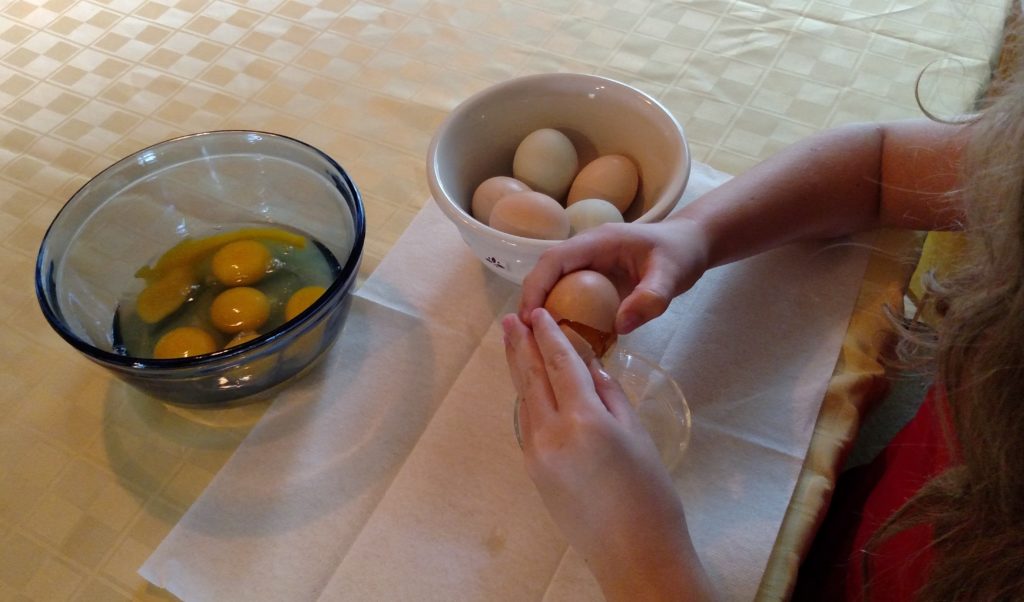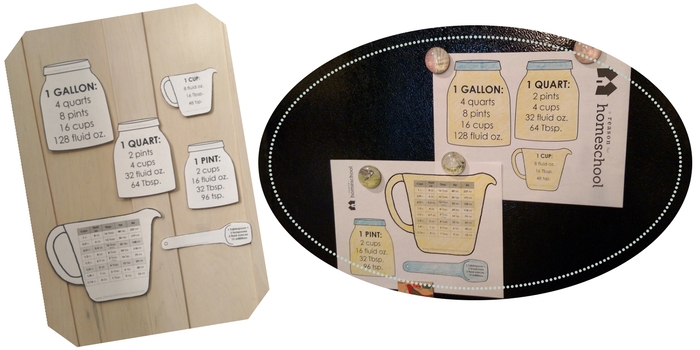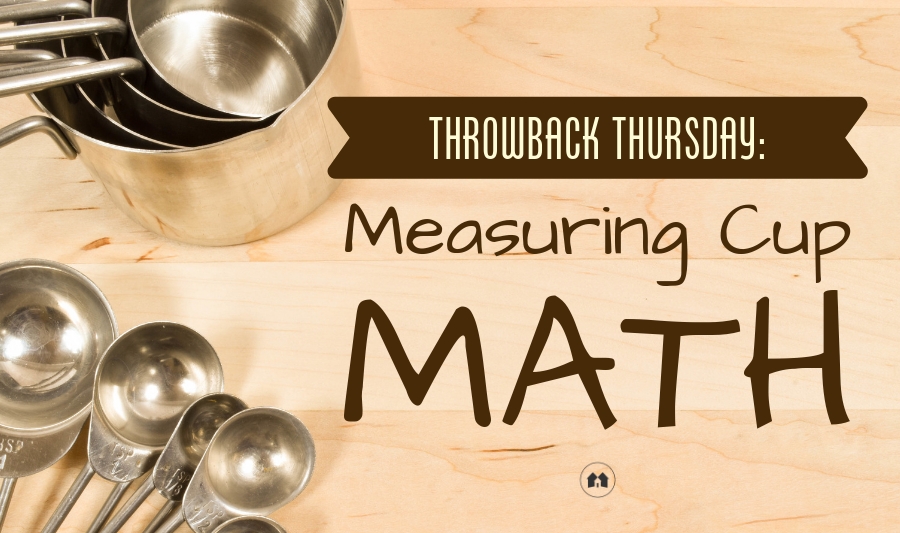Editor’s Note: Today we’re revisiting one of our most popular downloads …
be sure to get your own copy of these measurement conversion charts!
It’s safe to say I am not a math person.
You know those dreams you sometimes have as an adult, of being back in school and realizing you didn’t finish a big project or study for the test that counts as 40% of your grade?
My nightmares revolve around being in math—mostly algebra—class. Not forgotten presentations or neglected exams, mind you. Just algebra class. Period. This brain is simply not wired for higher mathematics. I tried in my younger years. Oh, how I tried! But advanced algebra, trigonometry and the like just never clicked for me.
Fortunately, my shortcomings were no surprise to God, and He matched me with someone for whom math seems effortless. My husband explains concepts I can’t begin to grasp, grades pre-calc lessons, and has been known to find errors in the answer key on occasion (while I would have just pointed to the book and told our high schooler to keep reworking the equation until she “got it right”). See, it really does all work together for good.
While I may not spend my days solving quadratic equations, the truth is, we can’t escape math. It is an essential part of life, and our kids obviously need to master basic mathematics: to add, subtract, multiply and divide. But being a bit of a math-o-phobe—and that’s a real thing, FYI—I’m always looking for ways to introduce math concepts outside the textbook. My favorite just happens to be one of my preferred pastimes: cooking.
From the time they were quite young, our kids have loved to help in the kitchen. While they obviously can’t do everything, there are many tasks that little ones can do. Cracking eggs into a ramekin (where I can check for bits of shell without contaminating the whole recipe), gathering and later putting away ingredients, and measuring have always been popular among helpers at our house.

Measuring is where we can really practice math skills. We have a large family that includes three teenagers. It shouldn’t come as a surprise that we regularly double, triple or even quadruple recipes while cooking, which provides a great opportunity to practice addition and simple multiplication. Somehow, when working with tangible items like flour and sugar, a child who has never been introduced to fractions in a textbook can still figure out that four half-cups = 2 cups. And with just a little direction from a parent or older sibling, this type of kitchen math quickly becomes second nature.
With tangible items like flour & sugar, a child who has never been introduced to fractions still figures out that 4 half-cups = 2 cups. This type of kitchen math quickly becomes second nature. Click To TweetWhether you print something new from the internet or pull out that well-worn vintage Betty Crocker cookbook, you’ll soon find that it’s easy to give your child the list of original amounts and have him calculate how much of each ingredient is needed to double or triple a recipe.
You might want to mention that this is absolutely not school work. Nope. Not at all.
Our downloadable Measurement Conversion Charts are a great way to double-check calculations at a glance. They’re ideal for kids who are old enough to work somewhat independently and for moms who might be – ahem – non-Mathletes (or maybe just bleary-eyed from being up half the night with allergies, or carrying around a clingy toddler all day, or scaling the summit of Mt. Laundry after the washing machine was out of commission for several days).

We hope you’ll download the PDF file and use these at home. You might keep a copy on the refrigerator, or hang the individual charts inside a cabinet door. Your kids can color them for their own personalized look. Leave a comment below to tell us how you decide to use them, or visit our Facebook page and share a photo!
Put down that worksheet and break out the measuring cups, mom … it’s time for math.
Download our printable
Measurement Conversion Charts
—
handy when kept on your fridge or cabinets, inside a recipe binder,
or in the front cover of your favorite cookbook.
Hint: be sure your printer’s page orientation is set to landscape before you print!
You may be asked to enter your email address if we don’t recognize you as a current subscriber.
Once you have, you can simply return to this page to download the file!

Hi I would like to download the Measurement Conversion Charts. I entered my email and it say I am already a member . How can I download the chart? Thanks you
Hi, Terry! If you enter your email address & find you’re already a member, you just need to return to the page & click the download link. The conversion charts should download right away. Please let us know if you have any issues … and thanks for downloading! We hope the measurement charts are useful to you. At our house, we use them all the time!